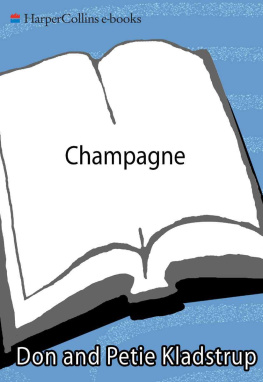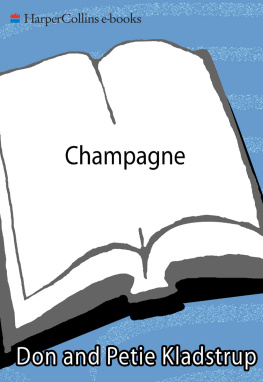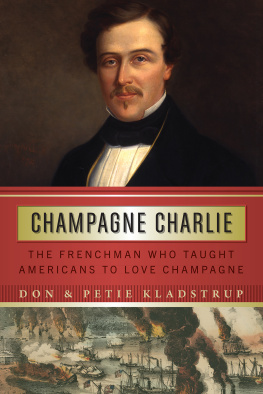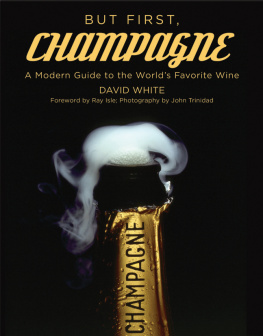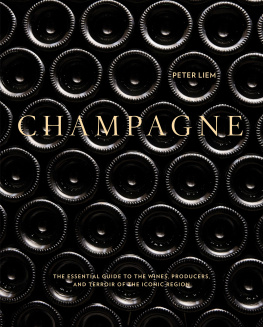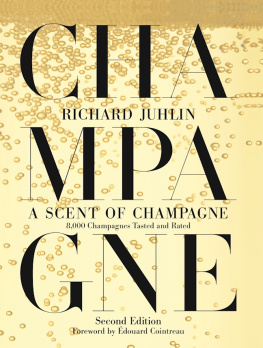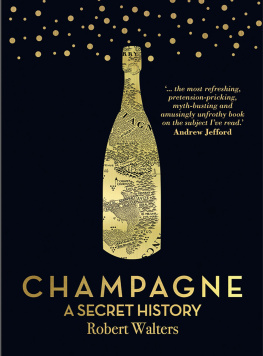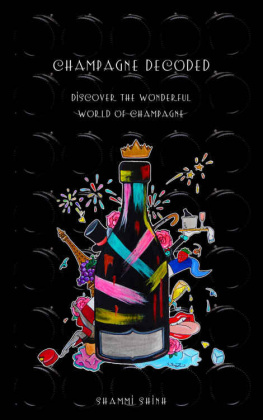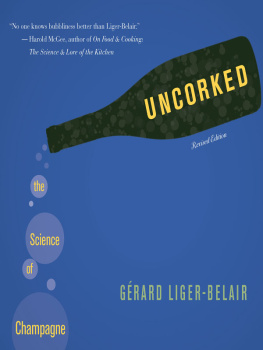Kladstrup Don - Champagne: How the Worlds Most Glamorous Wine Triumphed Over War and Hard Times
Here you can read online Kladstrup Don - Champagne: How the Worlds Most Glamorous Wine Triumphed Over War and Hard Times full text of the book (entire story) in english for free. Download pdf and epub, get meaning, cover and reviews about this ebook. year: 2005, publisher: William Morrow, genre: History. Description of the work, (preface) as well as reviews are available. Best literature library LitArk.com created for fans of good reading and offers a wide selection of genres:
Romance novel
Science fiction
Adventure
Detective
Science
History
Home and family
Prose
Art
Politics
Computer
Non-fiction
Religion
Business
Children
Humor
Choose a favorite category and find really read worthwhile books. Enjoy immersion in the world of imagination, feel the emotions of the characters or learn something new for yourself, make an fascinating discovery.
- Book:Champagne: How the Worlds Most Glamorous Wine Triumphed Over War and Hard Times
- Author:
- Publisher:William Morrow
- Genre:
- Year:2005
- Rating:3 / 5
- Favourites:Add to favourites
- Your mark:
Champagne: How the Worlds Most Glamorous Wine Triumphed Over War and Hard Times: summary, description and annotation
We offer to read an annotation, description, summary or preface (depends on what the author of the book "Champagne: How the Worlds Most Glamorous Wine Triumphed Over War and Hard Times" wrote himself). If you haven't found the necessary information about the book — write in the comments, we will try to find it.
From the time of Attila the Hun to
the Germans of World War II, waves of invaders
have tried to conquer the verdant region of
Champagne in northern France. Yet this strife-torn
land is also the birthplace of the worlds favorite wine: champagne.
In this engrossing history, Don and Petie Kladstrup show how this sparkling wine, born of bloodshed, became a symbol of glamour, good times, and celebration. Its a story filled with larger-than-life characters:Dom Prignon, the father of champagne, who, contrary to popular belief, worked his entire life to keep bubbles out of champagne; the Sun King, Louis XIV, who rarely drank anything but; and Napoleon, who, in trying to conquer the world, introduced it to champagne.
Then there were the generations of local vintners who struggled to keep their houses running. Claude Mot hauled his bottles to Versailles and gave Madame de Pompadour her first taste of bubbly, prompting her memorable quote, Champagne is the only wine that lets a woman remain beautiful after she has drunk it. There was also Charles-Camille Heidsieck, known as Champagne Charlie, who popularized champagne in America and ended up being imprisoned as a spy during the Civil War.
World War I would be Champagnes greatest test of all, a four-year nightmare in which nearly everything the Champenois had worked and fought for was destroyed in a rain of iron and fire. German bombardment drove thousands of people underground to seek refuge in the huge cellars of the champagne houses, where among the bottles you would find schools, hospitals, shops, municipal offices, and troops.
Amazingly, grapes continued to be harvested even as bombs fell, and the wartime vintages are considered to be among the finest ever made.
An unforgettable history, Champagne will forever change how you look at a glass of bubbly.
Kladstrup Don: author's other books
Who wrote Champagne: How the Worlds Most Glamorous Wine Triumphed Over War and Hard Times? Find out the surname, the name of the author of the book and a list of all author's works by series.

